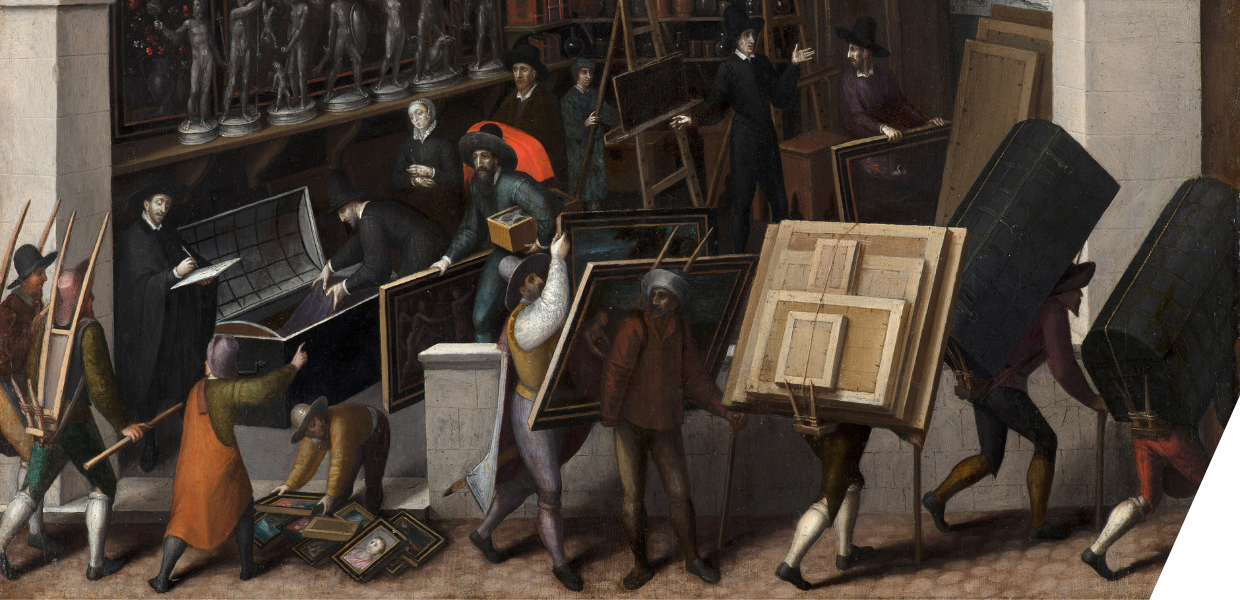Problematic or contentious cultural heritage content is part of a larger discussion around diversity, inclusion and equity happening now among professionals and in cultural heritage institutions. These institutions have an important role to play in education and research, and there is increasing acknowledgement by some institutions that items in their collections may represent colonial agendas, and that, in some cases, those objects have been removed from their cultural and historical context. Whether graphic medical content, derogatory descriptors, or other terms with controversial histories, there are many opportunities for confusion, and, potentially, harm. As the cultural heritage sector, we need to acknowledge this historical background and determine how to move forward.
Learning from each other
At Europeana, we regularly receive questions about items people discover on the Europeana website. Sometimes the feedback is about an item that could be sexist, racist, or in other ways cause harm to those visiting it or being represented by it.
The role of online platforms is often debated: do we have a responsibility not only to our audience, but also to the objects we share and their history? How can we, as an organisation, support and encourage discussion around these objects and the questions they reflect? Does providing access to content through our platform mean that we have a responsibility to act as content stewards? Content stewardship implies that, even though we aren't the creators of the objects we host, we have a responsibility in providing ethical access to that content.
Europeana is working to stimulate conversation about this topic by bringing cultural heritage institutions together for discussions; hosting spaces and events that allow for constructive dialogue and action; and supporting capacity building efforts throughout the sector that give institutions the tools they need to deal with potentially contentious aspects of their collections. We are also looking at what other organisations in our field are doing when faced with such situations, to establish information sharing networks, and identify good practices.
For example, the Digital Public Library of America has released a statement on potentially harmful content as have a number of libraries such as the Tisch Library. Other institutions like the Australian Institute of Aboriginal and Torres Strait Islander Studies and the National Library of Australia’s aggregator have opted for pop-up statements on their webpage, giving more context to visitors. The Pitt Rivers Museum at Oxford University has begun working with representatives from the Maasai cultures whose artefacts they hold, as part of an Indigenous Leadership programme organised by the NGO Insightshare.The National Museum of World Cultures recently published the influential publication 'Words Matter' to contribute to the dialogue of word use in the museum sector.
Editorial approaches
Europeana has also been working to focus attention on groups of people who have been marginalised throughout history. For example, communication and content for Black History Month in February and October and Women’s History Month in March were efforts to give visibility to people who have been instrumental in their fields of expertise, but are not given the visibility their contributions deserve, usually because they are part of marginalised groups.
Because some objects in our collections were created in different times and contexts, the way they portray certain groups of people may no longer be considered appropriate. When creating blogs and exhibitions, we try to present these objects in a way that helps people visiting our platform learn more about the wider context in which they were created. This gives us the opportunity to break through taboos, broach difficult subjects, and show different perspectives of an issue. Our China in Perspective exhibition, or our blog on the queer art of GAN are a few examples of how we can highlight themes like imperialism or homophobia in a historical context. To reduce the impact of exposing people to content they don't want to see, we use content warnings and contextualising introductions to help readers understand what is being described and shown.
Addressing challenges with both people and technology
Perhaps the biggest obstacle the cultural heritage sector faces when addressing contentious content is the sheer number of objects in collections. Embedding an inclusive approach in meeting this challenge allows minority and local communities and their allies to interact with their heritage and participate in its curation so we avoid misrepresenting their culture or using controversial language.
Aggregators have an important role in the data and metadata preparation stage by developing and working on tagging systems and identifying potentially problematic content from the cultural heritage institutions they work with. The Diversity and Inclusion group of the Europeana Aggregators’ Forum is exploring further how aggregators can play a role.
User feedback is another crucial way to identify possibly problematic objects or descriptions. Europeana has a feedback button that can be used on any page on the Europeana website, and we encourage people to use the form it brings you to to share their view on any object or piece of metadata.
Artificial Intelligence has repeatedly been suggested as a way to solve the issue of dealing with millions of objects to analyse. However, AI, much like people, learns from what it is taught and therefore also has its biases. It will be crucial to always keep in mind that algorithmic detection is never a full replacement of human labour: human validation and checking is needed to ensure the quality and accuracy of these algorithms. Promising examples of experimenting with machine learning to support curational work can be found at the DPLA and Cultural-AI.
Find out more
Transforming cultural heritage institutions and making content more inclusive goes a lot deeper than the discussion above. The need to challenge the structures and ideologies informing them is an essential part of the process. This process is neither quick nor easy, and we’re only laying its foundation. Learn more about what we're doing on diversity and inclusion in Europeana, or contribute to Europeana's diverse editorial by proposing a blog idea about a subject you're interested in.

